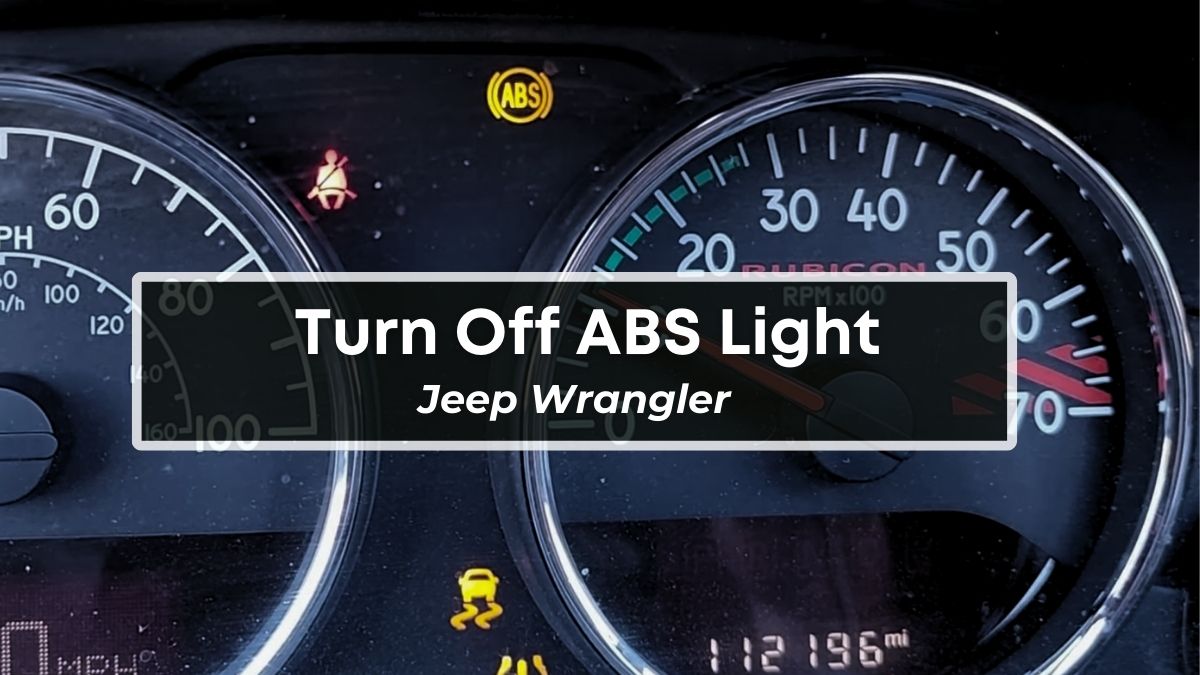How to Turn Off ABS Light On Jeep Wrangler?
To turn off the ABS warning light on the Jeep Wrangler, we’ll have to fix the underlying issue(s) that triggered it in the first place.
These issues include bad ABS sensor(s), damaged ABS sensor wiring, low brake fluid, blown ABS fuse, low tire pressure, faulty ABS pump, and defective ABS module.
To find out exactly which one of these components is going bad (and needs to be fixed), you’ll either have to check error codes with an OBD-II scanner or test each of them one after the other.
What is the ABS in Cars?
The ABS is one of the many advanced-level safety features in the Jeep Wrangler, which enables its wheels not to lock up when braking in slippery or wet conditions.
Applying hard braking on surfaces with less traction in a normal vehicle can cause the tires to skid. As a result, the vehicle will become difficult to maneuver and can spin out of control.
The ABS (Anti-lock Braking System) prevents this by monitoring the speed of each wheel in a vehicle. If it detects that any wheel is decelerating rapidly or is about to lock up, it releases some brake pressure temporarily, in the form of pulses, before reapplying it.
This way, ABS stops a vehicle efficiently and reduces the brake distance while allowing you to have steering control at the same time.
Causes of ABS Light in Jeep Wrangler
The ABS light is triggered by the ABS module as a warning message to the driver that the ABS is not working correctly so that they can resolve it as soon as possible.
I have already published a separate blog post on the causes of the ABS/traction lights turning on. Therefore, I won’t fully repeat myself here.
But to give you a rough idea, it happens when one or more conditions listed below are true:
- Bad wheel speed sensor
- Low brake fluid
- Blown ABS fuse(s)
- Low tire pressure
- Defective ABS module
- Faulty ABS pump/motor
How to Turn Off ABS Light in Jeep Wrangler
To identify which components are causing the issue, you’ll have to test them individually or use an OBDII scanner to read the error codes (if any).
1. Replace Bad ABS Sensor(s)
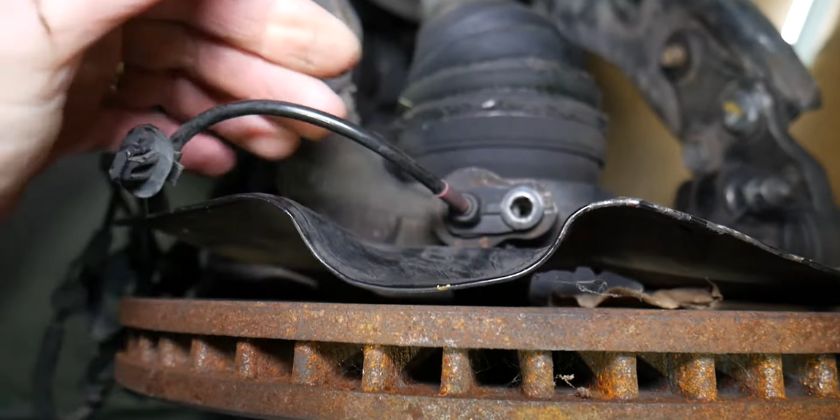
One of the most common reasons behind the ABS light is the faulty ABS sensor.
Also known as the wheel speed sensor, the ABS sensor monitors the rotational speed of each wheel in your vehicle and sends that information to the ABS module.
The ABS module uses that information and applies ABS brakes when necessary.
This sensor can malfunction over time and send incorrect/irregular speed data to the ABS module. This inaccurate/irregular data can lead to the ABS module not activating the ABS brakes – or activating them unnecessarily.
In both cases, the ABS module detects something wrong with the sensor and triggers the ABS light to turn on. Some owners have reported this sensor to trigger serv 4WD system light, too.
Common reasons behind a faulty ABS sensor include dirty/loose connection, damaged wiring, corrosion due to moisture exposure, or physical damage.
Therefore, we’ll physically examine and test all the ABS sensors in the vehicle. And replace any if necessary.
Here’s what you need to do:
- Disconnect the negative battery terminal.
- Locate the ABS sensor. You’ll have to remove the wheel for this purpose.
- Once you can access the sensor, physically examine it and its wiring.
- If it’s not damaged and only has corrosion/mud, try cleaning it gently with a brush or cloth. And see if it helps.
- On the other hand, if the ABS sensor looks visibly damaged, disconnect it from the wiring connector. Then, use a wrench or socket set to remove the mounting bolts and pull the sensor out.
- Test the resistance between its terminal with a multimeter. It’s usually 800-2000 Ohms.
- If you get a value outside this range, the ABS sensor is not working and should be replaced with a new one.
- Put the new ABS sensor in its place. Then, attach the mounting bolts and tighten them.
- Then, reconnect the wiring connector.
You can watch the video below for more information.
2. Fix Low Brake Fluid
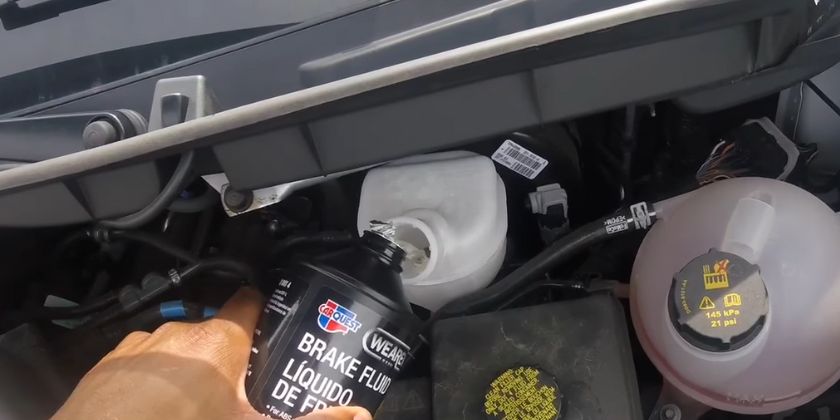
Another reason behind the ABS light is the low brake fluid.
That’s because the ABS relies on the hydraulic pressure created by the brake fluid. So, when the amount of this fluid gets low due to worn brake pads or leakage, the ABS can’t function properly – resulting in the warning light popping on your dash screen.
To confirm whether that’s the case or not, we’ll have to check the brake fluid level.
But before that, you need to inspect the brake fluid system and confirm there’s no leakage.
If there is, then fix that leaking component before adding new fluid.
Once you’re sure that there’s no leakage involved, follow these steps:
- Locate the brake fluid reservoir. It’s usually found in the driver’s side of the engine compartment.
- Clean the surrounding area and remove the reservoir cap to see the fluid level.
- There will be different markings in that area to indicate the fluid level. You’ll need to add new brake fluid if it’s below the ‘min/low’ level.
- Depending on your particular model, it will be either DOT 3 or DOT 4.
- As you add fluid, make sure that the reservoir level doesn’t go beyond the ‘full/max’ level.
- Once you’ve added the fluid, put the cap back on the reservoir.
Watch this video for more information.
3. Replace Blown ABS Fuse
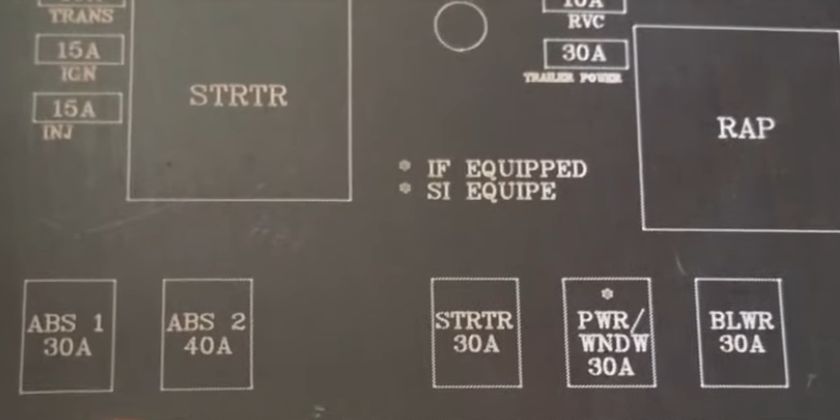
Like many other vehicle systems, the ABS has a fuse to protect against electric surges and overload.
If there’s an electrical issue in the ABS, this fuse breaks apart and ‘opens’ the circuit – preventing the ABS components from any damage.
Due to the open circuit, the ABS can’t get any current, which causes the ABS light to appear on your instrument cluster.
To confirm whether that’s indeed the issue, you’ll have to pull the ABS fuse out and test it.
Here’s how it goes:
- Disconnect the negative battery terminal.
- Locate the fuse box and identify the ABS fuse(s).
- Go through the fuse box diagram. The ABS fuse(s) will be labeled ‘ABS’ or ‘anti-lock.’
- In some cases, there will be two fuses: one for the ABS pump and one for the ABS valve.
- Pull each fuse out and test it with a multimeter or a test light to see if it’s blown.
- If any of these fuses is blown, replace it with a new fuse of the same amperage.
If you don’t know how to test a fuse with a multimeter, watch this video:
4. Fix Low Tire Pressure
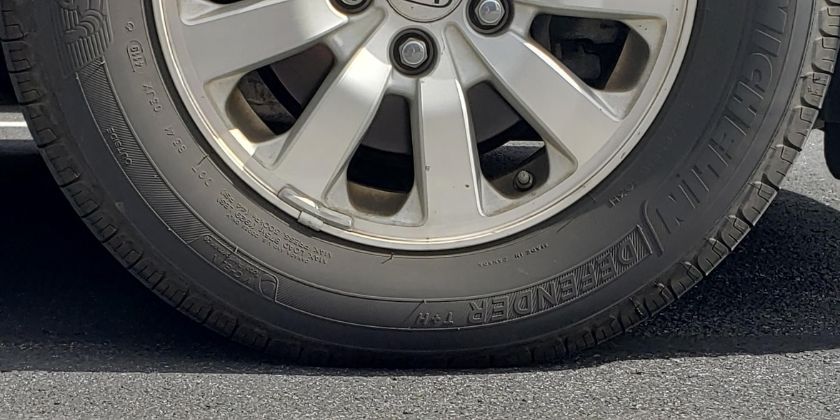
Low tire pressure can cause a wheel to have a different rotational speed than the other tires. This different speed can be detected by the ABS module as some issue with the ABS system, resulting in the ABS warning light popping on your dash screen.
It also causes the ‘low tire pressure’ warning light to appear.
If that’s the case with your vehicle, the low tire pressure is causing both of these lights to turn on.
To confirm that, you’ll need to measure the pressure on each of your tires and inflate them to the recommended level if it’s low.
You can check the inner side of the driver’s door to find out the recommended pressure for each of the tires.
5. Check the ABS Module
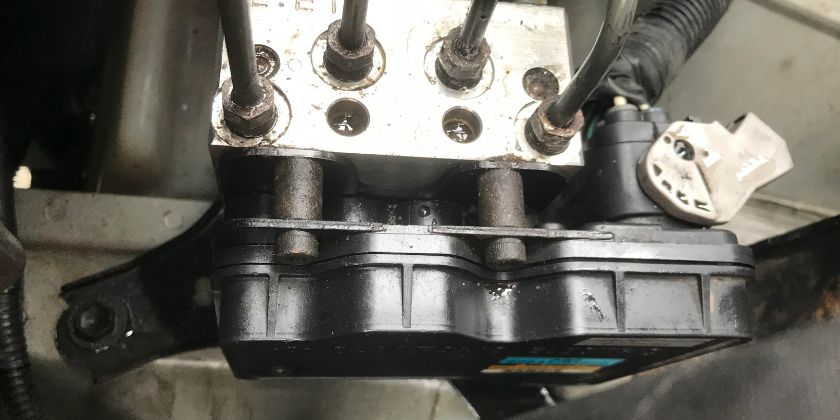
The last thing you can try is examining the ABS module.
Many times, this module can malfunction due to damage/loose wiring, exposure to moisture, or overheating, resulting in the activation of the ABS warning light.
To fix this, you’ll need to repair/replace the damaged/frayed wires and/or clean the corroded terminals.
In some rare cases, though, the ABS module can die due to physical or mechanical failure. In such a situation, the only option you’re left with is to replace that module.
This procedure should only be done by a professional mechanic as it is far too complex for most car owners.
For more information, you can watch this video.
How to Disable the ABS System in Jeep Wrangler?
Sometimes, people want to disable the ABS system in their vehicles to save some fuel, reduce ABS pump noise (which happens when the pump is failing), or have more control over the brakes.
While there are different ways to achieve this, the easiest one is pulling out the ABS fuse.
Here’s how it goes:
- Disconnect the negative battery terminal.
- Locate the fuse box and identify the ABS fuse(s).
- Pull these fuses out with a plier.
- Reconnect the battery terminal.
Now, the ABS system will not work unless you replug those fuses back into their slot.
The main downside of this method is that in some vehicles, ABS and TCS have a single fuse. Therefore, removing such fuses will disable both of those functions.
In such cases, you can try removing the ABS relay instead of the fuse. The process of doing so will remain. The only difference is that now you have to locate the ABS relay.
Whatever method you use, it’s important to remember that there are many drawbacks to disabling the ABS system (skidding, reduced steering control, etc.), and it’s also illegal to do so in some places.
Therefore, check these aspects before doing anything.
Jeep Wrangler ABS And Traction Control Light Reset
In some cases, the ABS and traction control lights in the Jeep Wrangler turn on for seemingly no reason or remain turned on even when you’ve identified and fixed the issue.
In both scenarios, the light appears due to residual power left in the system and can be turned off by disconnecting and reconnecting the battery.
Here’s what you need to do:
- Disconnect the negative terminal of the battery with a wrench. Make sure that it doesn’t touch any metal surface of the vehicle.
- Do the same with the positive battery terminal.
- Keep both of these cables disconnected for 10-15 minutes.
- Now, reconnect the positive battery terminal. And then the negative terminal.
Jeep Wrangler ABS Replacement Cost
It depends on the component of the ABS system that you’re trying to replace. And whether you plan to do the replacement on your own or hire a mechanic.
If you’ve got a bad ABS sensor, you can get a new one for $30-$100, depending on your vehicle, plus the mechanic’s fee. On the other hand, if the ABS module itself is not working, its replacement would cost you $500-$1000.
If we talk about the mechanic’s fee, it is typically $45-$170 per hour, depending on the area you live in and the component you’re replacing.
Conclusion
So, these are some methods you can follow to turn off the ABS light in the Jeep Wrangler.
As this light can be turned on due to various issues, we’ll have to check for all of them to determine the root cause.
Driving without the ABS system can be dangerous, especially in wet and slippery conditions. Therefore, you should get it fixed as soon as possible.
To make sure that this problem doesn’t occur too often, you need to regularly check your ABS sensor, brake fluid levels, tire pressure, etc.
Frequently Asked Questions
Can a Low Battery Cause the ABS Light to Come On?
Yes, many Jeep Wrangler owners have reported that sometimes low voltage in their vehicle batteries triggers the ABS to turn on.
Is it Normal for ABS Light to Stay on?
No, it’s not normal for the ABS light to stay on. It usually indicates that the ABS system is not working properly.
Is There a Fuse for the ABS Light?
Yes, the ABS system in every vehicle comes with one or two fuses. For example, the Jeep Wrangler 2007-18 models have two ABS fuses: J7 and J8. One is for the ABS pump, while the other one is for the ABS valve.
Can A Faulty ABS Sensor Affect the Gearbox?
The TCM (Transmission Control Module) uses ABS sensors for the wheel speed data. Therefore, incorrect information sent by a faulty ABS sensor can lead to erratic shifting between gears, delayed shifting, overdrive issues, etc.
How do I Turn Off the ABS Light on my Dashboard?
You can turn off the ABS light either by fixing the issue that caused the light to turn on in the first place, resetting the light, or clearing the codes via an OBD-II scanner.

